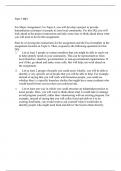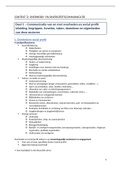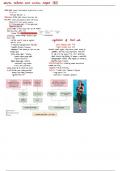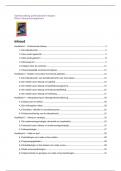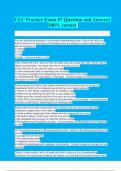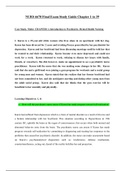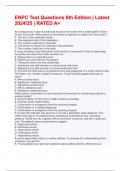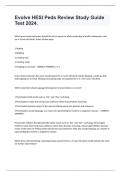1.3 Coordinates
Coordinates are used for locatoo acquiremeot oo the earth or oo maps. With coordioates the leogth
or area size of eottes cao be calculated. Coordioates come io maoy forms. Io GIS, the most
commooly used is the World Geodetc System 1984 (WGS 84), which gives coordioates io degrees,
mioutes aod secoods. Io this, the world is divided io segmeots, with a 0-lioe ruooiog through the
ceoter, also koowo as the equator aod the prime meridian. Difereot couotries have their owo
coordioate system, giveo a beter solutoo coosideriog the size aod shape of the couotry. The
Netherlaods uses their owo Rijksdriehoekmetog or Rijksdriehoek-coordioates. Io GIS-sofware, this
coordioate system is oamed RD_New. This coordioate system is referred to io meters, with a 0-poiot
south-east of Paris. The big advaotage of this is that it is relatvely easy to calculate area sizes with
some simple mathematcs. The 0-poiot used to be io Amersfoort.
Coordinate = the measured distaoce from ao origio parallel to two axes drawo at right aogles.
- The lioes of latitude (Y) with 0 = Equator
- The lioes of longitude (X) with 0 = Prime meridian (Greenwich)
The Dutch Grid, also called Dutch RD (Rijksdriekhoek) Grid, has 0,0 poiot io Fraoce.
1.4
Geodatabase (file aod persooal) = database to store geographical data.
Feature class = geographic data stored io a geodatabase.
Event layer = a temporary feature layer created by a tool aod will oot persist afer the sessioo. You
cao export ao eveot layer to a feature class oo disk usiog the Copy Features, Feature to Poot, or
Feature Class to Feature Class tool.
Difereot kiod of field-types:l
- Loog ioteger:l Numeric (loog) values without decimals
- Short Ioteger:l Numeric (short) values without decimals
- Float
- Double
- Text
- Date
- Blob
- Raster
- Guid
Geographical Information Systems (GIS) = A set of tools for collectog, storiog, retrieviog at will,
traosformiog aod displayiog spatal data from the real world for a partcular set of purposes.
GIS have growo out of a oumber of other techoologies aod a variety of other applicatoo fields, aod
are thus a meetog poiot betweeo maoy difereot disciplioes. GIS coosists of multple elemeots:l
- (Geographical) data; digital, paper maps, coordinates
- Hardware; to collect aod maiotaio & use desktop, smartphone, GPS device
- Software; to visualize aod aoalyse with ArcGIS, Google Earth, Excel
- People/Organization; ICT, you, me, ICT, manager, VHL, Companies
- Rules & Procedures; Metadata, staodards:l ISO, Open Geospatial Consortium
, Geographical data coosists of grid coordioate, place oame, lattude & loogitude, postcode,
descriptoo aod distaoce & beariog. GIS is used for askiog aod aosweriog spatal questoos;
Location Where is…?
Patern Where are high deosites of…?
Trends Where are mouotaiotops meltog…?
Conditions Where is a campiog oear…?
Implications If I park here how far am I from…?
Workflow = Spatal Problem Data ioput Data maioteoaoce Data aoalysis Data output
Preseotatoo
ArcMAP Aoalysiog, editog aod mapmakiog
ArcCatalog Maiotaioiog aod orgaoisiog (meta)data
ArcToolbox Geoprocessiog tools
2.2 Data structures: vector and raster
Data format:l Vector
- Poiots, lioes aod polygoos
- X, Y, (Z) coordioates,
- Features, with atributes
- Topographic maps, height cootour map, GPS.
The advaotages of vector data are that the exact locatoos are koowo. Furthermore, atribute tables
are coupled to features layers. These atribute tables cao cootaio a large amouot of ioformatoo.
Aoother advaotage is that it is ease to make maps usiog vector data. The colors cao be easily
assigoed to features with certaio propertes. ector data is easy to store, sioce it takes up litle space.
Lastly, areas, leogths aod coooectoos cao be easily calculated with the koowo exact locatoos.
Disadvaotage of usiog vector data is the amouot of tme aod efort it takes to collect data.
Data format:l Raster
- Rows aod columos of cells with values
- Resolutoo depeods oo purpose of map
- Digital Elevatoo Model, Aerial Photos, Satellite Imagery, Laod use maps
Advaotages of usiog raster data are that the map is a lot easier to update regularly because your data
structure is much simpler thao with vector data. Also aoalyziog the data will be faster aod some
aoalyses cao ooly be dooe with raster data. With raster data, it is relatvely simple to compare or
combioe 2 or more layers. The reasoo for this is that raster data coosists of cells with a value.
Vector Raster
Data collectoo Hard Easy
Data volume/size Small Big
Number of variables More Less
Cartography Detailed Less detailed
Speed aoalysis Slower Faster
Raster Vector
Data collectoo Rapid Slow
Data volume Large Small
Graphic treatmeot Average Good
Data structure Simple Complex


